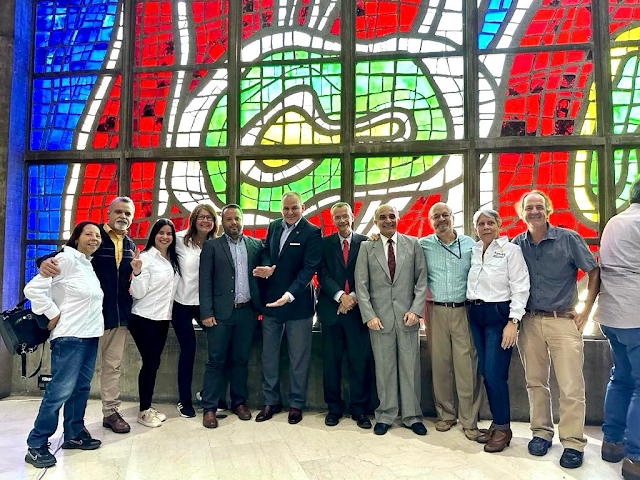INVESTIGACIONES MARINAS Y COSTERAS DESARROLLADAS POR FUNVISIS A FIN DE MEJORAR LA ESTIMACIÓN DE LA AMENAZA POR SISMOS Y TSUNAMIS MARINE AND COASTAL INVESTIGATIONS DEVELOPED BY FUNVISIS FOR SEISMIC AND TSUNAMI HAZARD ESTIMATION
Autor:
Publicado en:
Mayo, 2019.
RESUMEN
Los estudios de amenaza sísmica (EAS) realizados por Funvisis previos al sismo de Cariaco de 1997, solían usar la información de la franja costera para identificar, caracterizar y validar la actividad cuaternaria de fallas que la perturban, así como para establecer componentes verticales de movimientos de bloques tectónicos y/o fallas. Por su parte, los accidentes tectónicos submarinos eran esencialmente evaluados a partir de información publicada; y en ocasiones con ayuda de contados informes confidenciales generados y puestos a disposición por el contratante. Los conceptos modernos de estadios isotópicos marinos (MIS por sus siglas en inglés) son tímidamente incorporados en la década de los 90s. Posterior al sismo de 1997, Funvisis emprende directamente el estudio del fondo marino y su subsuelo por métodos geofísicos, particularmente en las áreas costa afuera del centro y oriente del país, no sólo con interés de reconocer las fallas cuaternarias submarinas, sino de establecer su actividad paleosísmica a partir de perturbaciones sin-sedimentarias de origen sísmico fosilizadas en el registro sedimentario submarino. La franja costera, por su parte, adquiere el interés de ser un archivo de las invasiones marinas pasadas por olas tsunamis, que ahora sí se reconocen como parte integral del riesgo sísmico. Igualmente, el registro sedimentario de la plataforma continental se usa para realizar reconstrucciones paleo-ambientales y reconocer los distintos ciclos sedimentarios vinculados a cambios eustáticos globales. A
ABSTRACT
Seismic Hazard Assessments (SHA) undertaken byFunvisis previous to the Cariaco 1997 earthquake, used to use information provided by coastal areas in order to identify, characterize and validate the Quaternary activity of faults crossing it, as well as to determine vertical component of motion of tectonic blocks and/or across faults. Instead, the submarine faults were assessed from available publications, and occasionally from confidential reports provided by the interested party. Modern concepts of Marine Isotope Stages (MIS) are shyly incorporated in the 90’s. After the 1997 earthquake, Funvisis directly starts acquiring sea-bottom and offshore subsurface geophysical data, particularly in north-central and eastern Venezuela. This not only intends to characterize the submarine Quaternary faults but to gather a paleoseismic record from the recognition of syn-sedimentary perturbations fossilized in the submarine sedimentary sequence. Coastal areas, as a matter of fact, are studied for the first time as a potential recorder of marine incursions of tsunami waves, which are now recognized as a fundamental component of coastal hazards. In the same way, the offshore sedimentary sequence is studied in terms of eustatic changes for paleo-environmental reconstructions. Palabras clave: Falla cuaternaria, sísmica marina, potencial sismogénico, tsunami, GPS Keywords: Quaternary fault, marine seismics, seismogenic potential, tsunami, GPS
Artículo completo disponible en:






Comentarios
Publicar un comentario